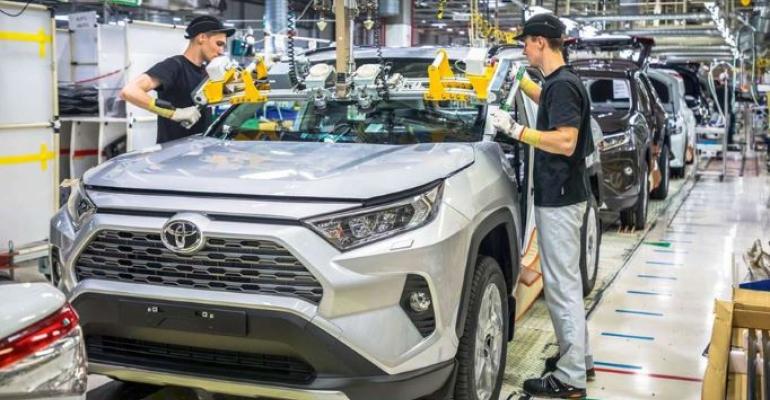Global automotive majors are continuing their exodus from Russia.
Several days ago, Toyota announced plans to close its Russian plant after more than 15 years of operation; Nissan announced the same decision Tuesday.
Toyota is closing its plant in the Shushary district of St. Petersburg mainly due to deteriorating economics and geopolitics in Russia and the inability to arrange the supplies of components into the country. Toyota’s Moscow office also will be optimized.
Toyota production in Russia started in 2007 with Camry and RAV4 models. In 2021, the Shushary plant with a capacity of 100,000 units increased its output by 20% to 80,800 cars. The automaker sold 117,300 cars on the Russian market (including Lexus) during the same period. The company also supplied cars to Kazakhstan, Belarus and Armenia from Russia.
Since the beginning of March, the plant has been idle due to logistical difficulties, and now will be mothballed. According to some sources close to St. Petersburg authorities, the Japanese automaker will discuss the sale of the asset. The company currently also does not import vehicles to Russia.
In the meantime, Nissan has decided to sell its Russian assets in the St. Petersburg region. The Russian Ministry of Industry and Trade, a state agency responsible for the development of the automotive sector, announces it will become the new owner of Nissan’s Russian assets.
AvtoVAZ will provide servicing for Nissan cars and will supply spare parts for them.
The deal is almost identical to the exodus of French automaker Renault from Russia. As in the case of Renault, Nissan will have an option to repurchase its assets within six years.
Nissan produced Qashqai, X-Trail and Murano SUVs at its plant in St. Petersburg with an output of nearly 50,000 units in 2021. The plant suspended work in March, shortly after the start of the war in Ukraine and amid sanctions against Russia. The factory was launched in 2009 with a capacity estimated at 100,000 cars per year.
After the exodus of both Nissan and Toyota from Russia, only a single large-scale foreign automotive factory is left in St. Petersburg, controlled by South Korean automaker Hyundai, and it sits idle.
According to data of AEB, car sales in Russia for this year’s first nine months fell 59.8% to 506,661 units, of which SUVs accounted for almost 47% of sales. After the sharp drop of the market in May and June, the market began a partial recovery; however, the announcement of partial mobilization in Russia led to another drop.
Currently only Avtovaz, the market leader, demonstrates positive dynamics, as the company managed to sell 20% more cars in September on a year-on-year basis. Chinese brands also are increasing their share in the Russian automotive market: They already account for about 30% of sales, compared to 39% in case of Russian cars.
This year, vehicle prices have skyrocketed. According to the analytical agency Avtostat, through August the average price of a new car in Russia amounted to 2.29 million rubles ($35,000) which is 22% more than in 2021.
Amid the exodus of Western automotive brands from the country, Russians have begun paying more attention to the secondary market. According to Avtostat, in August the average price of a car under 7 years old exceeded 2 million rubles ($30,850), up 50% from the beginning of the year. Due to the mobilization, the supply of used cars has increased by 20% in recent weeks.
Analysts expect sales of used cars in Russia will continue to grow, both due to their low price and wider availability relative to new cars.





